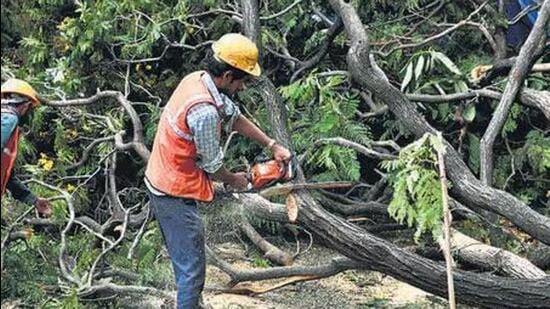Over 2L trees to be cut in Chhatisgarh’s Hasdeo Arand for mining: Centre tells RS
Hasdeo Arand is one of the largest contiguous stretches of very dense forest in central India spanning 170,000 hectares and has 23 coal blocks
New Delhi: The Centre on Thursday informed the Rajya Sabha that around 273,000 more trees are likely to be felled in coming years for mining in Hasdeo Arand forests as the wildlife and biodiversity institutions have not recommended a complete ban on mining. It also said less than 964,000 trees will be felled for the Great Nicobar project.

The Union environment ministry in the Rajya Sabha on Thursday shared information on two of the most contentious environmental matters in the country — the diversion of forests from Hasdeo Arand in Chhattisgarh and the Holistic Development of Great Nicobar Island in Andaman & Nicobar Islands project of Niti Aayog.
The ministry was responding to a question by Aam Aadmi Party (AAP) lawmaker Sandeep Kumar Pathak on whether the Wildlife Institute of India (WWI) has conducted any study on the Hasdeo Aranya. If so, whether a ban has been recommended in that report on mining activities? he asked. Pathak further asked whether a report has been submitted on the number of trees to be cut down.
Environment minister Bhupender Yadav said that, yes, there was a report and said “no complete ban on mining was recommended.”
The Chhattisgarh government assigned a Biodiversity Assessment Study of the whole Hasdeo-Arand Coalfields to the Indian Council of Forestry, Research and Education, Dehradun, in collaboration with the Wildlife Institute of India, Dehradun conducted a study and submitted the report, said Yadav.
He added that the report was submitted to the ministry of environment, forest & climate change by the state government on June 14, 2021.
The minister said that according to the report, 94,460 trees have been felled in Parsa East Kete Basen Mine, while over 5.3 million trees were planted as compensatory afforestation, mine reclamation and translocation. He added, as informed by the Chhattisgarh government, 273,757 trees are required to be felled in the coming years for mining in Hasdeo Arand.
Hasdeo Arand is one of the largest contiguous stretches of very dense forest in central India spanning 170,000 hectares and has 23 coal blocks. In 2009, the environment ministry categorised Hasdeo Arand to be a “No-Go” zone for mining because of its rich forest cover but allowed it again because there was no policy finalised.
Responding to another question on the contentious Great Nicobar project, junior environment minister Kirti Vardhan Singh said less than 964,000 trees will be felled. He said the project will not affect the breeding grounds of Leatherback Turtles.
Trinamool Congress MP Md Nadimul Haque questioned the ministry if the felling of 964,000 trees would impact the critical ecosystem of the region. He also asked if the trans-shipment port in Galathea Bay will affect the nesting of the giant leatherback turtle, and whether the government proposes specific conservation plans for coral reefs, the Nicobar Megapode bird, and the leatherback turtles.
“The breeding grounds of leatherback turtles are in no way getting altered due to the project. The large nesting areas (Western flank) have been retained as such for nesting of leatherbacks. Research unit set up by the Wildlife Institute of India (WII) to undertake and monitor sea turtle-related research in A&N islands is an important component of the special conditions of Environmental Clearance,” Singh said.
He added that the central government, in a letter dated 27.10.2022, has accorded the in principle/stage-1 approval for the diversion of 130.75 sq km of forest land for sustainable development in Great Nicobar Island.
“Compensatory Afforestation is carried out in lieu of diverted forest land. Further, more than 50% i.e. 65.99 sq km of the area proposed for diversion is reserved for green development where no tree felling is envisaged,” he said.
“It is expected that about 15% of the development area would continue to remain as green and open spaces and therefore the number of trees likely to be affected is going to be less than 964,000,” said Singh.
As per the conditions stipulated in the approvals accorded by the Central Government, adequate mitigation measures to compensate for the impact of development on flora and fauna are part of the environment/forest clearance conditions, the junior minister added.






